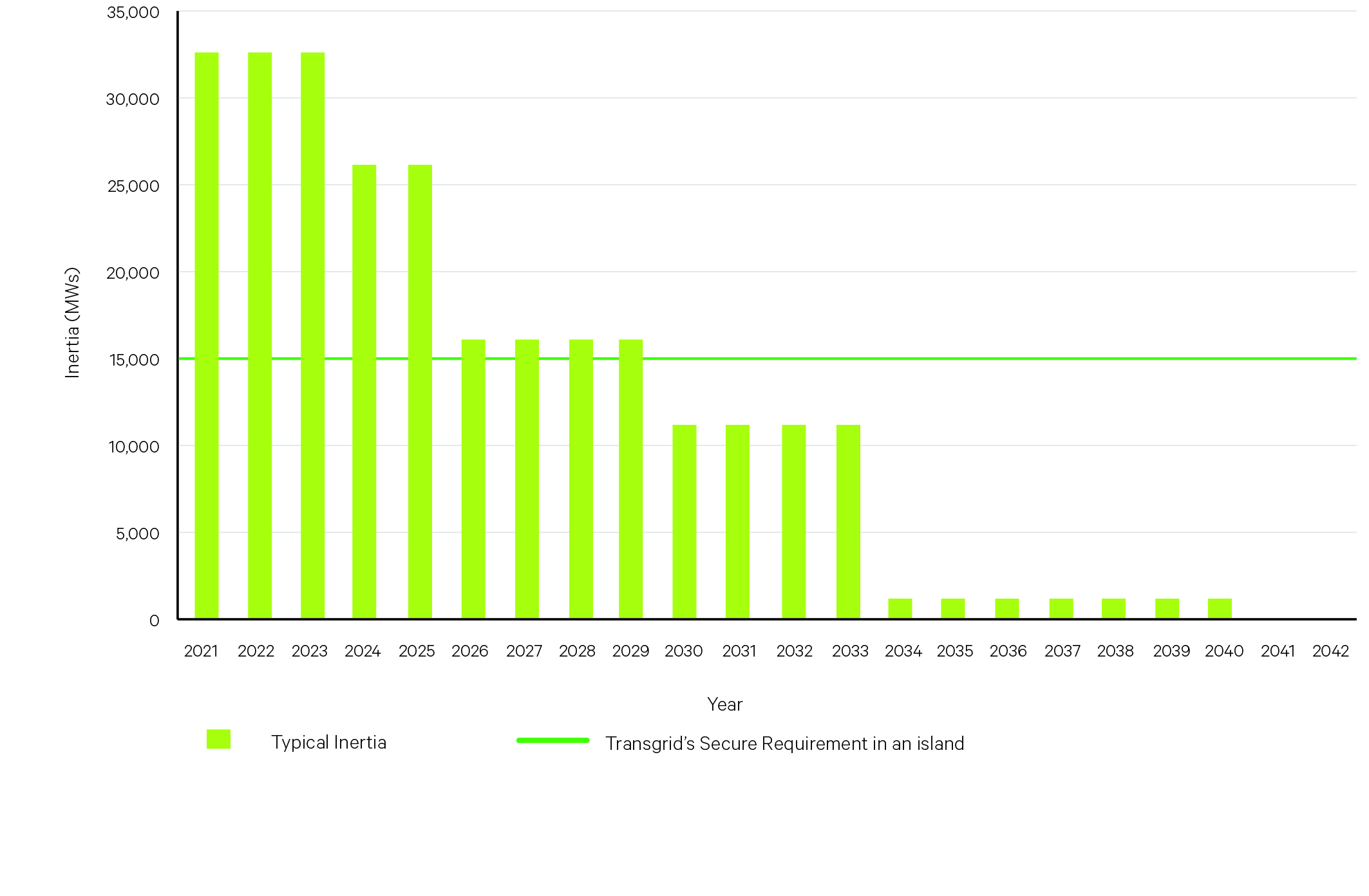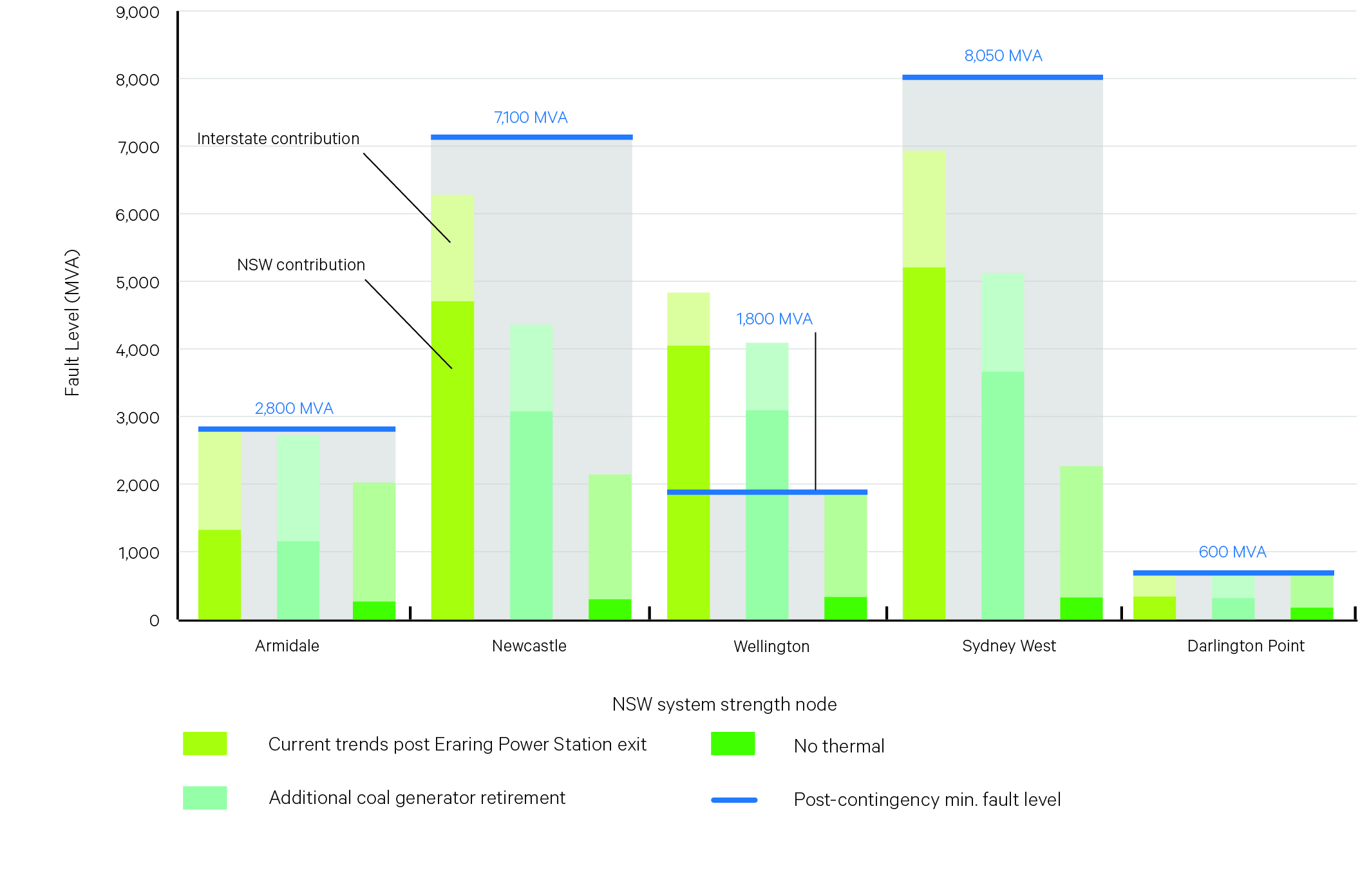As coal retirement accelerates in NSW, we need to move quickly to develop system security services from alternative sources.
17 August 2022
As the power system rapidly transitions to renewables, Transgrid is focused on ensuring that critical system security services are in place within our network. Synchronous generators like coal, which are physically coupled to the grid, stabilise the voltage wave form and provide inertia as a natural by-product of their power production. Whereas, non-synchronous renewable generators, which use grid following inverters to couple with the grid, do not.
Alternative sources for these system security services will be needed, given the coal-fired generators which are currently relied upon are retiring sooner than expected, and are likely to experience more frequent maintenance outages in the meantime.
Frequency Control
Frequency control is provided across the NEM through inertia, Fast Frequency Response (FFR) and Frequency Control Ancillary Services (FCAS). The graph below shows the reduction in inertia forecast in NSW based on currently published coal generator retirement dates. But given we keep hearing announcements that these retirement dates could be further accelerated, it is possible that inertia levels could fall below Transgrid’s minimum requirements within the next few years.

System Strength
Currently, Transmission Network Service Providers (TNSPs) are responsible for addressing gaps in system strength, once a shortfall is identified by AEMO. In NSW, AEMO has declared a system strength shortfall in Newcastle and in Sydney West from mid-2025, following the retirement of both the Liddell and Eraring Power Stations. Transgrid is investigating network and non-network options to address this gap.
Under a new rule made by the Australian Energy Markets Commission in late 2021, TNSPs will soon be responsible for providing (or procuring) both minimum and efficient levels of system strength over a forward-looking timeframe. For Transgrid, this means putting services in place to provide an efficient level of system strength within our network by 2 December 2025 at the latest.
We are also mindful that system strength shortfalls can occur earlier than expected if coal‑fired power stations retire early, experience more frequent outages, or periods of flexible operations (economic decommitment) where they are unavailable during times of low demand or energy prices.
Transgrid has assessed system strength requirements in the NSW transmission networks under a range of possible future scenarios, including where more coal power station retirements are brought forward.

The graph above depicts some of these scenarios. It shows a growing gap at NSW system strength nodes between the minimum fault levels defined by AEMO, and the contribution available from online generators. This gap may become even greater if other states experience similar system changes at the same time, and minimum coal unit combinations are no longer available NEM-wide to provide interstate contributions.
We need to fast-track alternative solutions
Given the significant and growing need for security services within our network, and longer lead times for new infrastructure, Transgrid believes we need to move to urgently develop and deploy alternative solutions.
For example, this could involve installing synchronous condensers within the NSW transmission network in Kemps Creek and Newcastle, similar to the successful grid security solution installed in South Australia in 2021.
Early actions like this will provide insurance against coal unit outages or sooner than forecast retirements. This would be a low-regrets option that would meet AEMO’s declared system strength shortfall in 2025 – the first step towards developing a full portfolio of system strength services as required by the recent rule change.
Other options could involve procuring services from existing or newly developed generation assets, such as hydro and grid scale batteries (particularly with grid-forming capabilities).
For example, Transgrid is trialling the use of grid-scale batteries to provide the ‘synthetic inertia’ and fast-frequency services needed to manage power system frequency.
We have already constructed the first large-scale grid battery in NSW, located at our Wallgrove substation in Western Sydney – a 50 MW/75MWh battery constructed using Tesla Megapacks. The battery commenced commercial operations in December 2021.
We expect to activate ‘Virtual Machine Mode’ on the battery in late 2022, when we will start testing and verifying its capabilities to provide system security services. If successful, we hope to demonstrate that batteries may be able to provide these services at a lower cost than other technology options.
Learn more at Transgrid's Transmission Annual Planning Report 2022
